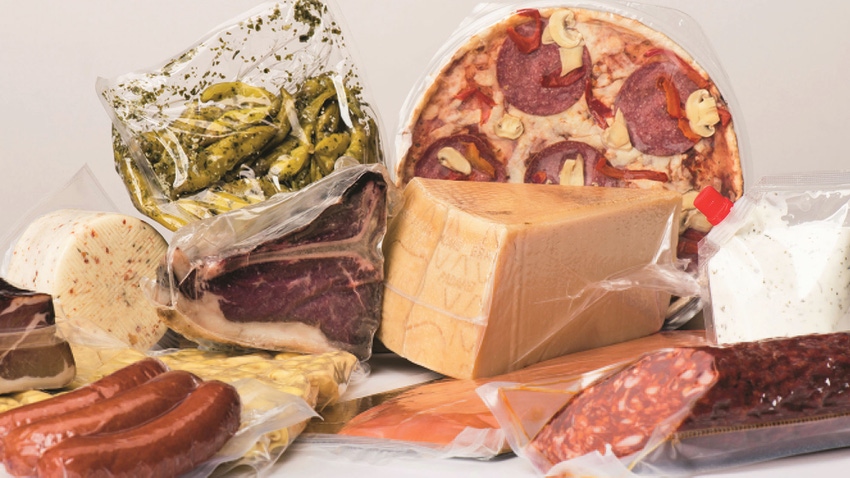Recycling Expanded for Multilayer Polyamide Films
BASF’s third-party studies prove broad portfolio of polyethylene/polyamide food packaging structures support “Design for Recycling” guidelines.

A broader range of high-barrier, multilayer flexible packaging used for foods including meat and cheese has achieved a milestone for polyethylene film recycling compatibility.
The independent Institute Cyclos-HTP GmbH, which specializes in the classification, assessment, and certification of the recyclability of packaging and goods, has completed further extensive investigations into the recyclability of multilayer films containing 6 (PA6) and ethyl vinyl alcohol (EVOH) copolymer. These studies follow those conducted in 2021 on the recyclability of coextruded polyethylene/polyamide (PE/PA) multilayer films.
The subjects of the new studies commissioned by BASF are coextruded PE/PA6/EVOH high-barrier films and laminated PA6/PE films in household packaging waste. It has been demonstrated that these two film types are also compatible for recycling in the polyethylene film stream.
“The results show that PE film waste streams containing PA can be processed without significant adjustments to the recycling process,” says Dr. Matthias Zorn, senior manager market development polyamides for extrusion applications at BASF. “The certification confirms the standard market practice of PA-containing film waste already being recycled by film manufacturers today.”
Compatibilizer enables packaging recyclability.
The compatibilizer, which is incorporated additionally into laminated structures to enable distribution of the PA component in the PE matrix, plays an important role. In coextruded structures, the already present tie layer used to bond PA and PE in the film becomes an effective compatibilizer during the recycling process.
“If additional functionalized polyethylene (PE-g-MAH) is also added as a compatibilizer during primary film production, the polyamide is even recognized as a valuable material in the polyethylene recyclate by cyclos-HTP,” Zorn explains.
Arranged with the cooperation with high-performance films supplier SüdPack, the adhesive-laminated PE/PA films study clearly shows how these films, which were previously considered non-recyclable, can also be made recycling compatible.
In this project, a laminating adhesive from Henkel was used. Based on the new studies, a broad portfolio of PA-containing packaging can now be certified as recycling compatible.
Improved sustainability for source-reducing films.
Due to their unique property profile, polyamides reduce the amount of material used in packaging applications and therefore help to reduce packaging waste. They also improve the mechanical, thermal, and processing properties of the packaging.
While PE/PA/EVOH films are used in cheese and sausage packaging requiring a high oxygen barrier, laminated structures are more common in printed film packaging in these segments.
Last year, the German minimum standard for determining the recyclability of packaging subject to system participation pursuant to Section 21 (3) VerpackG already recognized the recyclability of coextruded PE/PA films. The certification is another important fundament for a fact-based classification of polyamides in packaging. The results are made available both to the CEN standardization group, which is developing a “Design for Recycling” guideline at European level, and to the Central Agency Packaging Register, which sets the German minimum standard for assessing recyclability every year.
Further information can be found on BASF’s Mechanical Recycling page.
About the Author(s)
You May Also Like




